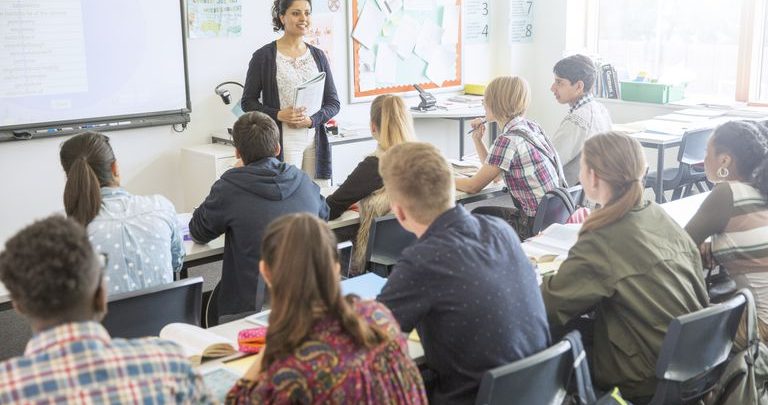What Should Be Taught to Kids in English Language Course?

An English language course should devise the curriculum according to the students’ age range. For example, children between the age group of three to five years should be taught English basics, whereas kids with the age group between thirteen to seventeen should be taught about real-world topics. However, a few things can remain common in an English language course for all students. These include the following:
Reading and Comprehending
Kids between the age group of three to seventeen years can quickly learn to read and comprehend passages, articles, games, subjects, etc. Children between the age group of three to five years can read stories, poems, rhymes, follow picture props, identify characters, and recognize differences, patterns, similarities, and changes.
On the other hand, children between thirteen to seventeen can read news articles, real-life topics, academic discussions, etc. and comprehend the same with their tutor. They can participate in fun activities like mimicking the narrator, stating synonyms or antonyms, rephrasing sentences, etc.
Writing and Explaining
Children between three to five years can quickly write stories based on personal experiences, narrations, games, tv topics, etc. An English language course should include lessons like jumbled sentences, fill in the blanks, sentence formation, MCQs, etc.
After that, the tutor can ask the student to explain their answers and inform them about the correct answers. Activities like grammar rule repetition, image building, etc. can help such young kids remember the lesson for a long time.
On the other hand, secondary plus students can directly write and explain their answers to jumbled sentences, fill in the blanks, sentence formation, MCQs, etc.
Listening and Answering
Young kids have low retention spans. Therefore, listening is one of the most crucial yet challenging tasks for them. The English listening lessons for such young minds should include audio stories, narrations, sharing personal experiences, etc. On the other hand, secondary plus students can listen to news podcasts, debates, radio shows, etc.
After that, the tutor could ask the student to explain the context, meaning of words, and even share a mock test with them at the end of the class to know their listening skills. Such an activity would retain the attention span of young kids and secondary plus students.
Speaking and Correlating
The last important task to teach spoken english for kids is speaking and correlating. Spoken English involves fluency, speech, pronunciation, grammar, vocabulary, etc. Teaching all aspects of spoken English would be challenging than expected, especially for young kids. However, their grasping power would be much more than secondary plus students.
Therefore, to improve young kids’ spoken English aspects, the tutor should take recitation, narration, poem, rhyme, and other similar lessons. On the other hand, secondary plus students can improve their spoken English with word repetition, reading aloud, understanding concepts like pronunciation, iteration, etc. After that, they can correlate to the story and explain it to the tutor.
Therefore, an English language course for kids should include English reading, writing, listening, and speaking skills that prove handy even after their schooling.




